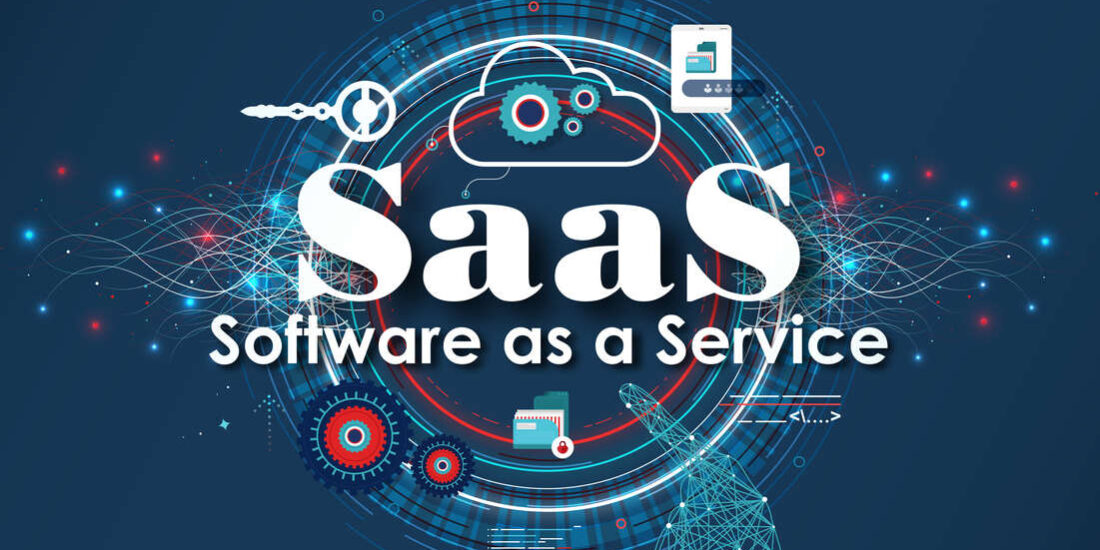As companies grow from small to midsize, they inevitably arrive at a point where systematic cost analysis — a regular, automated process of evaluating all costs — is critical to their survival and continued growth. Small companies with just a few services or products can check manually to make sure they understand their costs well enough to price them and turn a profit. When material and labor costs are stable and predictable (as they were for most of the last decade), pricing and costing isn’t a huge challenge.
But when products and services proliferate, as they do when enterprises get bigger, midsize businesses often begin losing money on some of them while profiting on others, and this is exacerbated in unpredictable market environments. This creates a suboptimal average profit. Worse, if those profitable services and products are overpriced, the company will slowly lose sales, too, pushing its revenue mix further down the wrong side of the ledger.
At that point, manual checks will no longer suffice to track a broader array of costs back to individual products or services. Midsize companies then require technologies such as ERP (enterprise resource planning), MRP (material requirements planning), and project management software to keep them on the right (and profitable) track by examining what creates value and at what cost, tracing the flow of labor and materials through the value-generation process, and minimizing the costs of excess assets like inventory or underutilized human assets. This is a key turning point in the digital transformation of midsize firms. Simply having a basic, accounting-focused ERP is not enough, as it leaves many activities unmeasured and unmanaged, with other activities still using paper-based processes with slow, periodic reporting at best.
Analysis and tracking technologies like these aren’t just for manufacturing companies. As work volumes rise in any growing midsize businesses — from plumbing to consulting to law firms through retailers and distributors — the complexity of tracking the true costs of products and services increases exponentially. Here’s how one midsize company pursued its digital transformation and implemented upgraded technology successfully.
Growing from Small to Midsize
Elcon Precision, based in San Jose, California, and founded in 1967, produces precision components and assemblies for the aerospace, defense, and medical industries. It specializes in photochemical etching, brazed assembly, and ceramic metallization. It grew into a midsize company decades ago and has hovered in the 50–100 headcount over the years. In 2015, while upgrading its ERP software, Elcon learned that its profits by product were not what it assumed. They were too low, and one division, Ceramics, looked like it was flat-out losing money and perhaps should be shut down. Tim Dyer, Elcon’s President since 2017, says, “We might have gone out of business by now, that’s how bad it was.”
Elcon’s manufacturing processes are very complex. It sells about 5,000 finished components made from 10,000 parts and subassemblies. Elcon has substantial direct labor costs and shifting component costs, including rare and expensive metals like gold and molybdenum. As the sole source for many of its products, the company cannot rely on pricing-to-market, and its relatively small team could never effectively use spreadsheets to analyze total production costs to set prices. There were just too many products and cost components, and Elcon couldn’t capture its labor costs on a product-by-product basis.
“Without an organization-wide ERP with MRP capabilities,” says Dyer, “it was impossible for us to remain profitable due to the high diversity of components and assemblies we sell. I don’t think anyone could have done it without this technology.”
Digital Transformation in the Midsize Company
Midsize companies almost never start from scratch. They have some set of IT systems that worked for them when they started out. Elcon, like so many other smaller businesses, began with QuickBooks. By 2011, it was obvious the company had outgrown it, and hoping to better capture costs for its Ceramics division, it upgraded to MAS 90, a Sage accounting package. But by 2015, that software was no longer supported, forcing the company to upgrade to Sage 100. By this time, Elcon knew it would need to integrate all its operations on one connected system. That’s what is often called “digital transformation.”
The digital transformation of a midsize firm takes years. And it should. Trying to compress it into too tight a timeframe often backfires, either taking longer than planned, wrecking morale, or ending in a compete implementation failure. And after the core of the ERP is up and running, a company must create a roadmap laying out which problems the implementation is intended to address and identifying what will be important to have in place for follow-on IT projects. Dyer recalls:
The Ceramics division had questionable gross margins. We began the integration using handwritten times on travelers [paper forms attached to products as they move through assembly] to input into Sage to calculate gross margin. We were examining Ceramics’ profitability, but we always assumed that the Metals division was profitable, so no one focused on it. As it turned out, there was a lot to learn on the Metals side, too; it wasn’t uniformly profitable.
Elcon finished its upgrade to Sage 100 in late 2015, integrated its quality management system in early 2016, and toward the end of that year brought in work order barcode-scanning systems. Elcon acquired a company in 2016 and a division of Jennings Radio in 2018, integrated them into its ERP/MRP, and implemented a SQL database. All this set the stage for 2020: a new CRM for sales flexibility with a special price-quoting module that created travelers with barcodes. They also made an efficiency move: a barcode inventory module that eliminated the year-end inventory treasure hunt. December 2020’s inventory count took one person one day to complete, versus five days and five people in years prior.
The Turnaround
As the only provider of many of its products, Elcon shares its costing data to justify price increases. Systematic cost analysis drives that process. Elcon’s Ceramics division was the only U.S. supplier of one strategic military component. Their customers asked Elcon to name the price they needed to maintain production. Elcon used its new system to demonstrate that it needed to quadruple the price of that component. To Elcon’s surprise, its customers agreed, and the Ceramics division, far from being closed, is now profitable.
With its systematic cost analysis technologies, “We can now accurately calculate and verify the gross margin of every product we sell,” says Dyer. “With that knowledge, we can make intelligent decisions on where to target capital expenditures for efficiency and throughput improvements.”
Elcon’s investment in technology has worked. After a slow sales year in 2017, 2018 began showing the fruits of their labor. Gross and net margins were growing, and the companies’ books reflected that.
One product group, ceramic metallization, comprising 20% of Elcon’s sales, saw gross margin rise 50% from 2017 to 2020. The gain was driven by negotiating supply chain price reductions, replacing two people with an assembly robot, not accepting low gross margin orders, improving yields, reducing QC costs, bringing in a more efficient furnace, and implementing other Six Sigma process improvements. One of the two employees replaced retired, and the other was retrained to work in a different department.
Price increases played a big part of a steady annual rise in Elcon’s top line — up 40% in 2020 as compared to 2016. Net profit grew each year beginning in 2018. By 2020, it leaped 2.56 times from unacceptably low levels in 2016.
Becoming a data-driven company is an arduous task for a midsize firm. It’s easy for senior leaders to accept current systems as good enough, especially if the company is getting strong overall results with them. But profit is won or lost a penny at a time. Keeping IT systems modern and fully capable of managing costs is core to staying competitive and profitable. Continuous improvement is the right approach.
The journey continues for Elcon. Next steps for 2021 include finding a maintenance module that talks to Sage 100 and a custom CRM/sales module for space component assemblies. The company has begun preparing to implement a demand-planning system during 2022.
How to Prepare for and Execute Digital Transformation in a Midsize Company
Changing a base accounting system can run from several hundred thousand dollars to the millions after accounting for licenses, implementation, training, and lost productivity during the change. Choosing the right ERP is crucial, as so many processes and systems will be layered on top of that base, and making changes later, or replacing ERP systems, is risky and expensive. Highlighted by Elcon’s success and based on our experience, key considerations when choosing an ERP include:
- The ability of the ERP software to grow with your business. How will your needs be different when your company is double or triple its current size?
- The long-term viability of the company that created the ERP. Small software companies can serve niche industries very well, but a software vendor should be viable and responsive for the next 15+ years. Ensure they will be updating the software regularly and that your upgrade path is smooth.
- The overhead of managing the ERP. Big companies like SAP will be around for a long time, allow for scaling up, and are very versatile. Yet such systems are often costly to manage and maintain and may be overkill for many midsize companies.
- The availability of pre-built modules that will work for your businesses. You will doubtless need CRM, project management programs, barcoding, MRP, and more.
- The ease of integration with external software. These could be vendor or customer systems or other software systems you choose to use internally.
- The strength of your value-added reseller (VAR). That’s the company selling, installing, and customizing the software. VARs promise a lot; be sure they can deliver on those promises.
- The contract with the VAR. It should include incentives that encourage it to stay on schedule.
At a high level, the transformation roadmap should look forward at least five years, as the selection of software is often influenced by what capabilities the business will need down the road. However, a short-term roadmap that details plans one to two years in advance is critical for implementation.
The incremental approach is crucial because:
- Midsize companies need payback for the costs of implementing IT changes. Taking it in small bites produces results quickly, increasing efficiency or effectiveness in one area of the business, and helps justify further IT investments. Most companies can’t afford big-bang transformation.
- Even small IT system changes are complex and tackling them in small bites reduces the risk of failure.
- IT staff, whether internal or outsourced, are usually resource constrained. A series of smaller projects allows a smaller team to be more agile and make steady progress.
- The business’s needs often change as it digitally transforms. Most midsize companies can’t see exactly what they’ll need without having experienced some of the changes that new systems bring. The interplay of learning from data-driven systems and the design of the next system is critical.
- The employees who will work with the new technologies have limited time to devote to learning how to use them. They have day jobs. Too much change too fast can impact service levels and revenue-generating activities. What’s more, change of any sort is uncomfortable and must be managed, which is time and resource consuming. Technology change must take its place alongside all other types of changes, such as new products, acquisitions, new services, new hires, geographic expansion, shifting marketplace trends, and more.
Building the capability to support systematic cost analysis isn’t easy for midsize companies. But done well, it can become the foundation for managing gross margins for both products and services companies.























